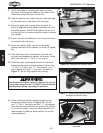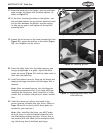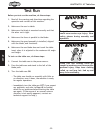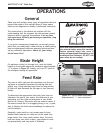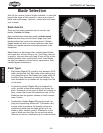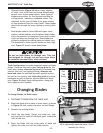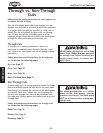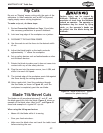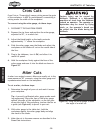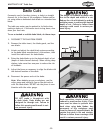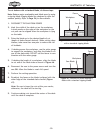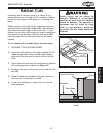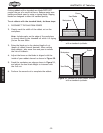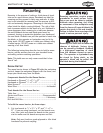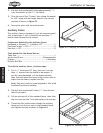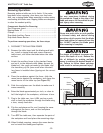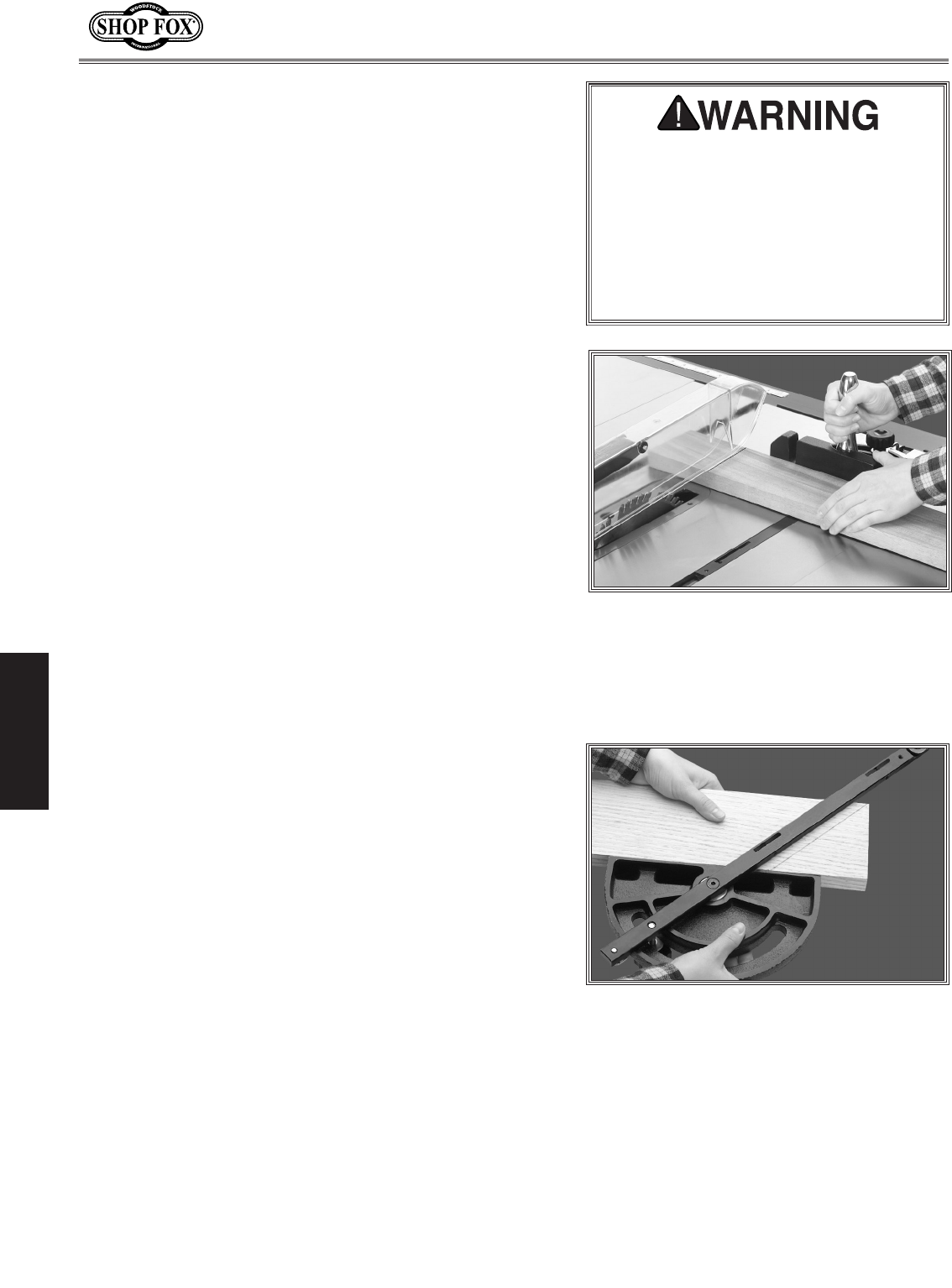
-28-
W1677/W1711 10" Table Saw
OPERATIONS
Cross Cuts
Cross Cuts or "Crosscutting" means cutting across the grain
of the workpiece. In MDF or particleboard, crosscutting is
cutting across the width of the workpiece.
To crosscut using the miter gauge, do these steps:
1. DISCONNECT THE SAW FROM POWER!
2. Remove the rip fence and position the miter gauge,
adjusted to 90°, in a miter slot.
3. Adjust the blade height so the teeth protrude
approximately
1
⁄4" above the workpiece.
4. Slide the miter gauge near the blade and adjust the
workpiece so the blade will cut on the waste side of
the line.
5. Plug in the tablesaw, turn it ON, and allow it to
reach full speed.
6. Hold the workpiece firmly against the face of the
miter gauge and ease it into the blade as shown in
Figure 43.
Serious injury can be caused by
kickback. Kickback is a high-speed
expulsion of stock from the tablesaw
toward an operator. The operator or
bystanders may be struck by flying
stock, or the operator’s hands can
be pulled into the blade during the
kickback.
Miter Cuts
A miter is an angled crosscut. Miters are usually cut in the
same manner as 90˚ crosscuts, using the miter gauge and
a predetermined mark on the workpiece.
To cut a miter, do these steps:
1. Determine the angle of your cut and mark it across
your workpiece.
Tip: A correctly calibrated miter gauge makes mark-
ing angles easy.
Place the face of the miter gauge
against the edge of the workpiece, so the bar goes
across the face of the workpiece, and use the bar as
a guide (see
Figure 44) to pencil in your cut.
2. With miter gauge in the table slot, hold the
workpiece against the miter gauge body and align
the mark to the blade.
3. Make the cut in the same manner as described in the
Cross Cuts instructions.
Figure 43. Typical cross cut.
Figure 44. Using the miter gauge to mark
the angle of a miter cut.



